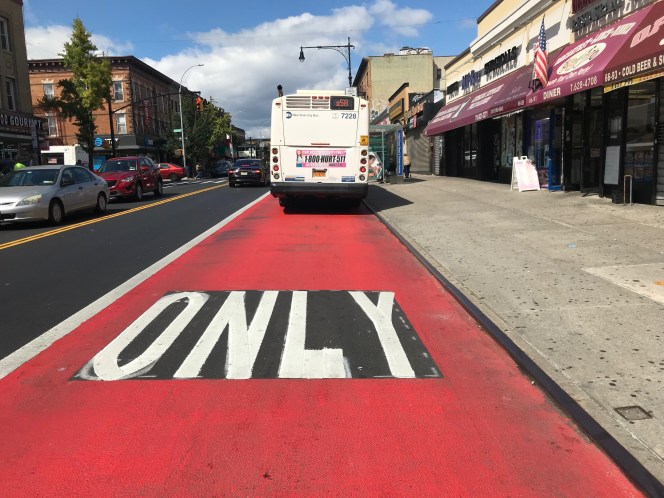Many European cities have been rolling out bike- and bus-only lanes as a strategy to reduce residents' risk of viral exposure during COVID-19. U.S. cities like New York have already built new bike lanes during the pandemic, and the Los Angeles Metro transit system is considering doing so. In late May, Chicago Department of Transportation Commissioner Gia Biagi told Crain’s magazine that the city was considering rolling out new bus lanes, but there has been no action since then.
The CTA and Pace have continued to see relatively much higher ridership during COVID-19 on the South and West sides than the North, which has resulted in some crowding issues. Many advocates have wondered created bus-only lanes to increase speed and reliability, which would allow the agency to run more vehicles without "bus bunching" issues. I reached out to two Chicago transportation experts to get their take on the CTA’s pandemic response, in particular bus service.
Audrey Wennink, transportation director for the Metropolitan Planning Council, said the “CTA should consider adding frequency and also using articulated higher-capacity buses,” and the agency should continue mask distribution to ensure all riders are wearing masks at all times. Wennink also endorsed the idea of building pandemic bus lanes.
I agree there needs to be more mask distribution, but of course that doesn't ensure every rider will wear a mask properly. I have been riding the train regularly for about the past 10 days and I’ve seen people with masks under their chin or with their nose hanging over the mask. While compliance still may not be 100 percent, more mask distribution would be helpful.

Dr. P.S. Sriraj, director of the Urban Transportation Center at UIC, Director of the Metropolitan Transportation Support Initiative (METSI) argued that while building bus lanes would be beneficial, it's no simple task. “The CTA will need to study if congestion will increase along the corridor and safety implications, among other things,” he argued. He added that he would be interested to know whether travel times have already decreased for buses during the pandemic, a time when transit ridership and private vehicle traffic has generally decreased.
Asked whether equity could be an argument for adding bus-only lanes on the South and West side during this time, Sriraj responded. “Equity can be tricky. How are we measuring equity? Is it based on socioeconomic status? Race? Percentage of transit dependent residents? Everyone has a valid reason as to why they are to be served. Uniform benchmarks have to be established.”
This brought to mind how last April a coalition of Chicagoland advocacy and civic groups called for “an equitable, clear, and transparent process to engage stakeholders and the public in the planning process for the regional transit system’s response to COVID-19." One of the asks was for increased service along routes that serve a large number of essential workers. Another demand was for transparency regarding federal stimulus funds and allowing the public to comment on plans to spend those dollars. These calls were very reasonable, and yet months later the coalition’s commonsense suggestions have not been implemented.
Commissioner Biagi has touted the fact that Chicago didn't cut transit service during the pandemic. However, some transit riders have reported that buses have been unreliable during the crisis, and in some cases crowding forces them to wait for the next bus, which means they have to plan more time for their commutes.
The CTA says no service cuts have been made, but the experience of my coworkers tells a different story. Some are waiting 40+ minutes for a bus, only for it to pass them by when it finally comes.
— kyle tear down that highway lucas (@itskylelucas) July 10, 2020
Those dependent on transit deserve better. Pre-pandemic it would have made some sense to complete numerous traffic studies and such for the implementation of bus-only lanes. But I don’t believe we have to continue the cycle of allowing good ideas to languish due to red-tape. A Streetsblog USA article written earlier this year discussed how bus-only lanes can be rolled out quickly and cheaply. We would be wise to follow the lead of numerous other cities that have quickly implemented bus-only lanes in response to COVID-19.





